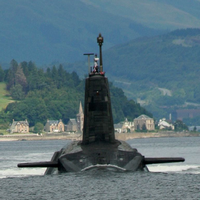The sinking of the South Korean corvette Cheonan in March 2010 reignited global concerns over the proliferation of submarine technology. Although the total number of submarines in service worldwide has declined since the end of the Cold War, largely because of the disappearance of the Soviet navy and a reduction in U.S. forces, the number of countries operating relatively advanced submarines has increased. The People’s Liberation Army Navy (PLAN) in particular has expanded the size and sophistication of its undersea armada. At the same time, capabilities for fighting submarines have atrophied. Altogether, these trends suggest an alarming degree of uncertainty in the relationships among major powers and between major powers and minor states. However, a closer examination suggests that a roughly stable asymmetry has been achieved, both in quantitative and qualitative terms. The balance of undersea capabilities bears attention, but doesn’t yet indicate the threat of a “breakout” arms race.
The biggest undersea stories of the past 20 years have been the collapse of the Soviet navy, the general reduction in U.S. forces and the rise of the PLAN. The latter two trends have led to considerable consternation regarding the ability of the United States to retain dominance in the Western Pacific. However, as David Axe has amply documented, the Russian and Chinese submarine fleets currently face significant difficulties. The Russian fleet continues to age and decline in size, while the PLAN submarine force has stabilized at between 50 and 70 boats. Unsurprisingly, given U.S. budget considerations, the U.S. Navy will likely not expand its fleet from its current total of 57 attack and cruise-missile submarines, although it continues to modernize and update.
What of the art of anti-submarine warfare? In the Cold War, anti-submarine warfare (ASW) involved complex cooperation between a wide series of platforms designed specifically for combat in the North Sea and the Arctic. In an important sense, anti-submarine warfare represented the first “network-centric” warfare, in that the sharing of information across platforms at high speed was understood as the key to managing the conflict. Developed out of the experience of World War II’s Battle of the Atlantic, Cold War-era ASW required the sharing of real-time evidence of a submarine’s location between a variety of “shooters” who could bring weapons to bear on the target. This led to an elaborate and inherently “joint” battle plan, in which air forces and navies from several NATO partners, operating with extremely detailed knowledge of local weather and oceanographic conditions, sought to locate Soviet submarines.

